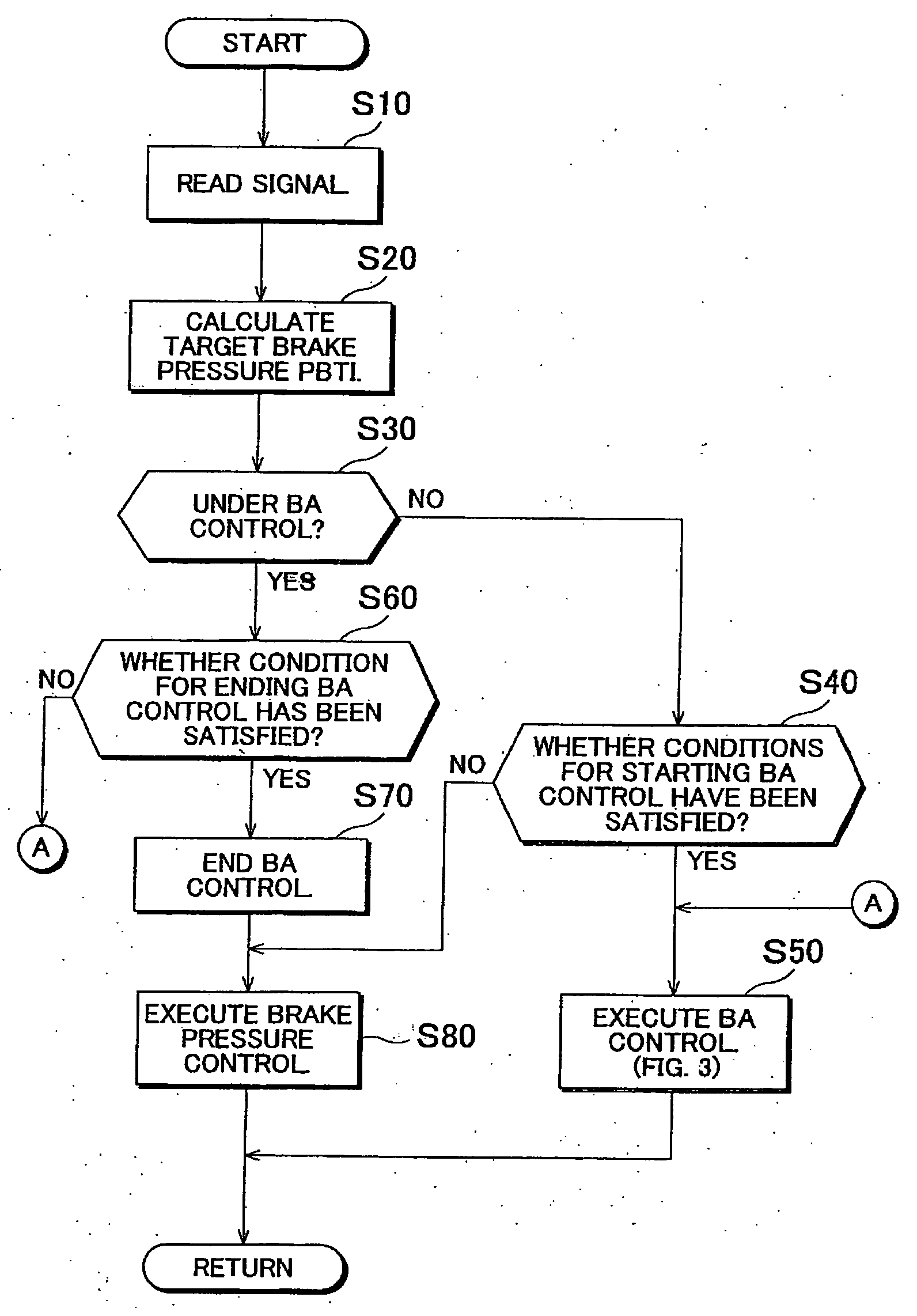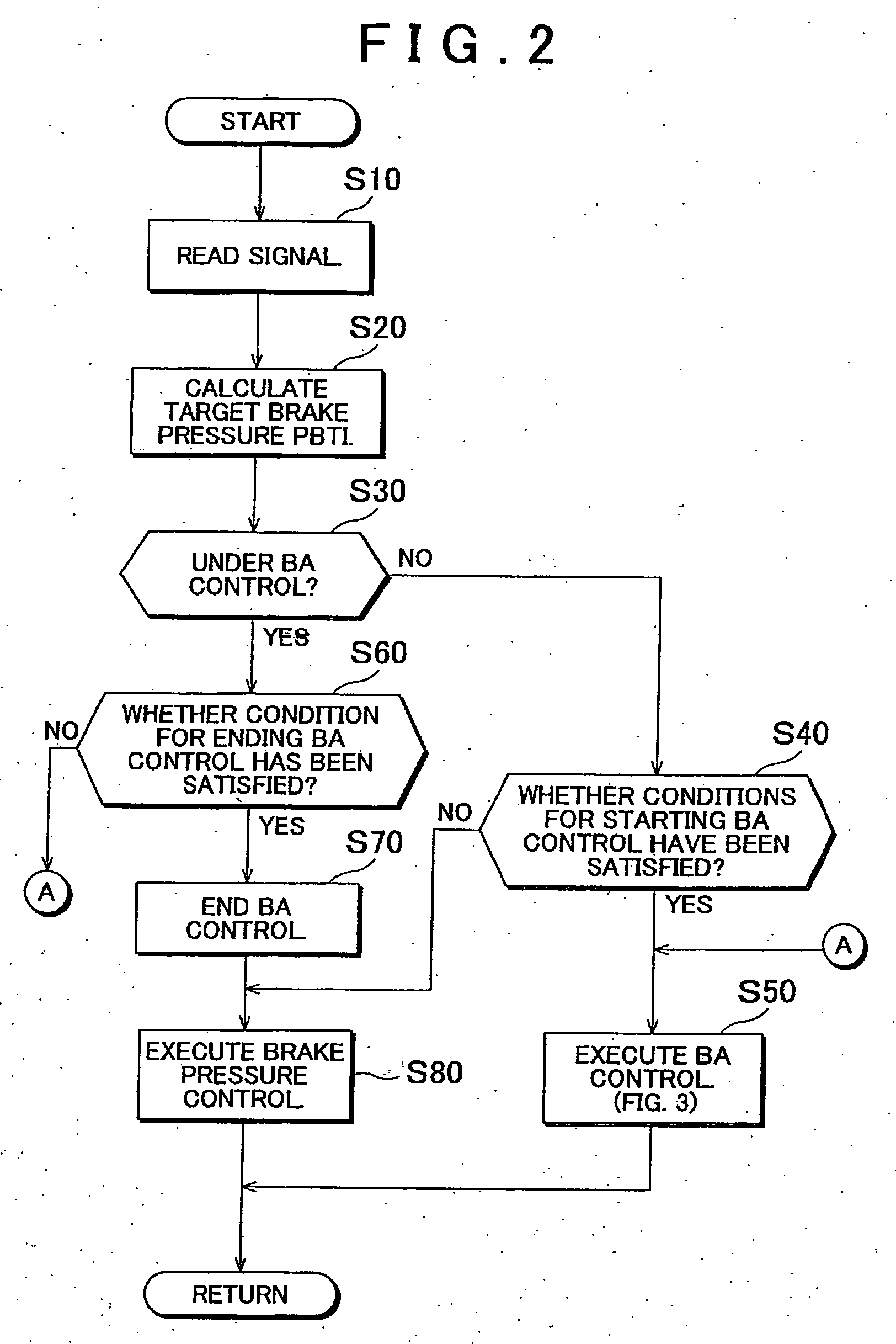Vehicle drive control system and method
a control system and vehicle technology, applied in the direction of braking systems, instruments, analogue processes for specific applications, etc., can solve the problems of insufficient control of the brake assist control, the difficulty of the driver turning the vehicle as intended, and the inability of the driver to turn the vehicle as intended by the driver's steering operation, etc., to achieve the effect of reducing torsional stress, increasing torsional stress, and increasing the likelihood of an emergency operation by the driver
- Summary
- Abstract
- Description
- Claims
- Application Information
AI Technical Summary
Benefits of technology
Problems solved by technology
Method used
Image
Examples
first embodiment
[0040]FIG. 1 is a schematic diagram of a vehicle drive control system according to the invention, which is applied to a vehicle having front and rear active stabilizers.
[0041] In FIG. 1, reference numerals 10FL and 10FR denote left and right front wheels of a vehicle 12 as driven wheels, respectively, and reference numerals 10RL and 10RR denote left and right rear wheels of the vehicle 12 as drive wheels, respectively. The left and right front wheels 10FL and 10FR, which are also steered wheels, are steered via tie rods by a power steering apparatus (not shown) that is driven in response to a steering wheel (not shown) being operated by the driver.
[0042] An active stabilizer 16 is provided between the left and right front wheels 10FL and 10FR. An active stabilizer 18 is provided between the left and right rear wheels 10RL and 10RR. The active stabilizer 16 has a pair of torsion bars 16TL and 16TR, which extend coaxially to each other with the axis extending in the lateral direction...
second embodiment
[0086]FIG. 9 is a schematic diagram of a vehicle drive control according to the invention. In FIG. 9, components corresponding to those in FIG. 1 are denoted by the same reference numerals and symbols as in FIG. 1.
[0087] According to the second embodiment, a radar 66 is provided for detecting an obstacle in front of the vehicle and a distance L between the vehicle and the obstacle. A signal indicative of the distance L is inputted to the ECU 50. Based on the presence or absence of an obstacle and the distance L, the ECU 50 determines whether the driver is likely to perform emergency steering operation, and calculates a potential time Tc until the vehicle collides with the obstacle. The time Tc is obtained from the following equitation 1 representing the relationship between distance L, vehicle speed V, vehicle deceleration Gxb, and time Tc. The ECU 50 calculates a correction coefficient Ka such that the shorter the time Tc, the larger the coefficient Ka. Then, an index value Ks, whi...
PUM
 Login to View More
Login to View More Abstract
Description
Claims
Application Information
 Login to View More
Login to View More - R&D
- Intellectual Property
- Life Sciences
- Materials
- Tech Scout
- Unparalleled Data Quality
- Higher Quality Content
- 60% Fewer Hallucinations
Browse by: Latest US Patents, China's latest patents, Technical Efficacy Thesaurus, Application Domain, Technology Topic, Popular Technical Reports.
© 2025 PatSnap. All rights reserved.Legal|Privacy policy|Modern Slavery Act Transparency Statement|Sitemap|About US| Contact US: help@patsnap.com



